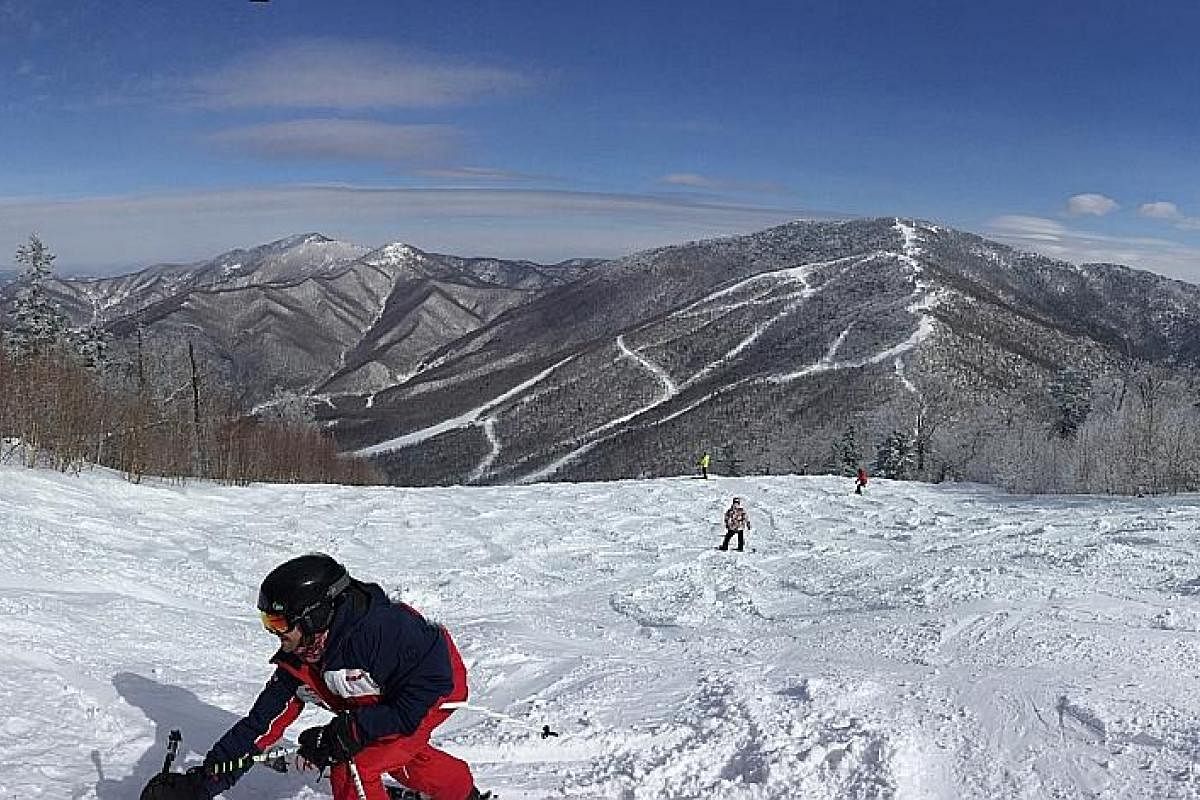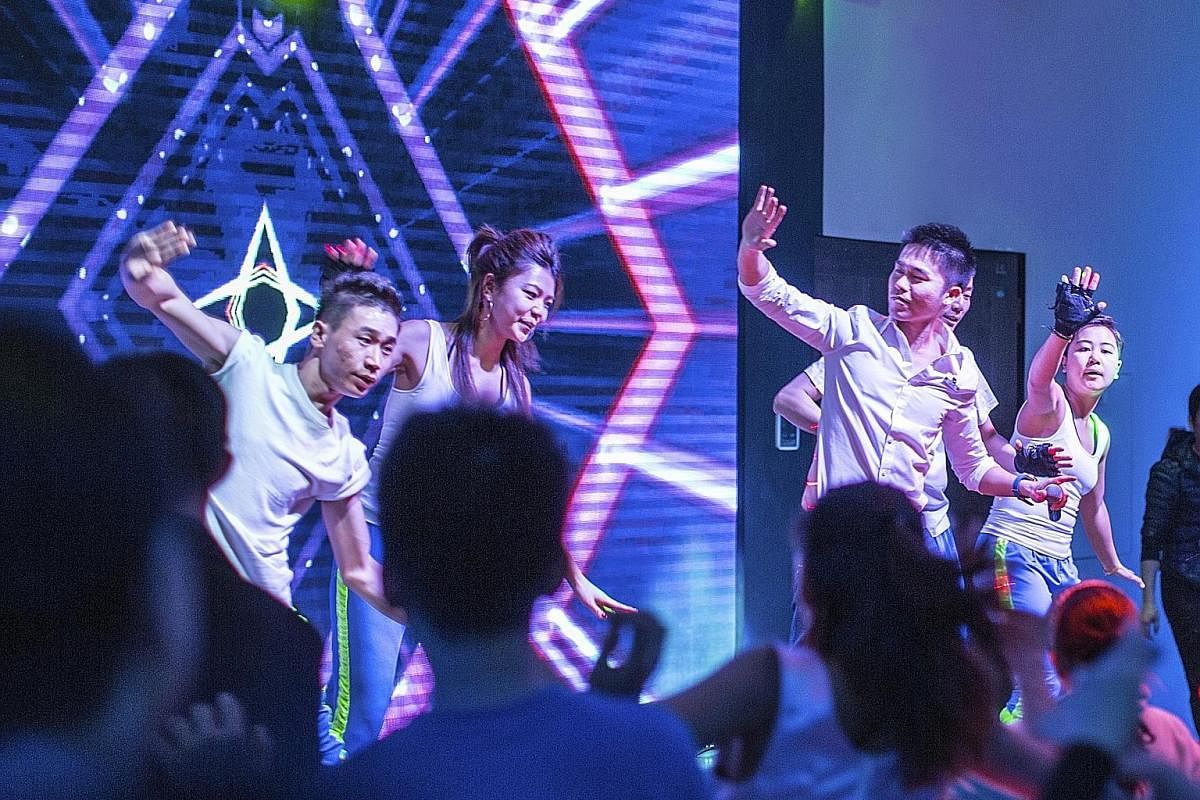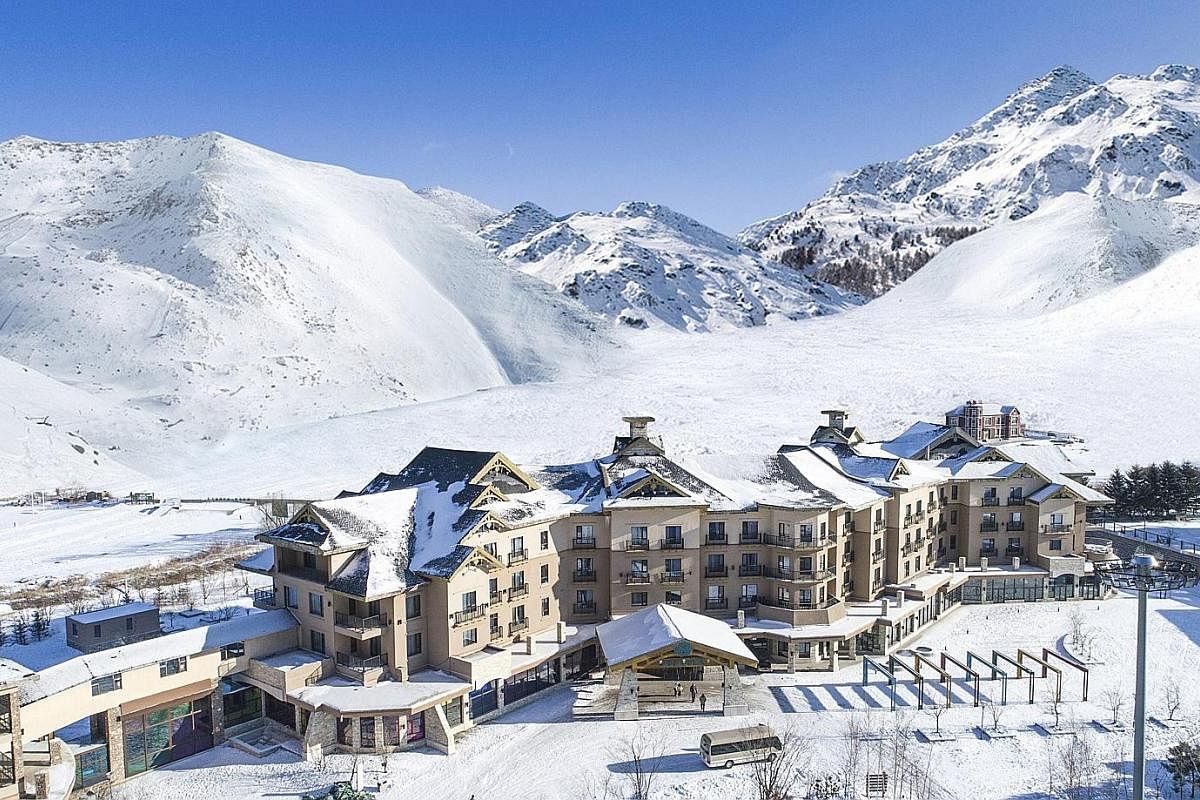-
GETTING THERE
-
Airlines such as China Eastern and Air China offer flights to Changchun from Singapore, with layovers in cities including Shanghai and Beijing. Singapore Airlines also flies direct from Singapore to Shanghai and Beijing.
Club Med Beidahu is a 21/2-hour drive from Changchun Longjia International Airport. Flights and airport transfers can be arranged by the resort. Room rates start at $259 an adult and $155 a child (aged four to 11) a night for a Deluxe Family Room, which sleeps four guests. Prices are inclusive of food, drink, group ski lessons and lift passes.
Private one-on-one ski lessons start at 640 yuan (S$134) for a two-hour session.
-
TIPS FOR NEW SKIERS
Buy your own ski gloves
It is perfectly fine to rent a ski outfit, but you do not want to be using someone else's gloves.
A runny nose is common in cold weather. Thefabric on the index fingers and thumbs of ski gloves are called snot sleeves for a reason.
Wear a helmet
Ski helmets protect your head and keep you warm. Most resorts sell them from about US$50 (S$66). They should be snug and you should not feel pressure at the sides of your head. Reliable brands include Giro, Smith and POC. Opt for bright colours.
Always carry a trail map
While the Beidahu resort did not have pocket trail maps for skiers last season, most resorts do.
Keep one handy in case you get lost. While resorts usually do a sweep of the runs at the end of the day, you do not want to have veered out of bounds.
Know emergency numbers
If there is a mishap, you do not want to be trawling the Web for who to call. Save the number for ski patrol on your smartphone.
Hand and feet warmers
These can make all the difference. Opt for gloves with zip-pockets to insert hand warmers and stick foot warmers into your boots to keep your toes toasty.
Keep your iPhone alive
Slap a hand or foot warmer onto the back of your smartphone. Mine switched off numerous times as most smartphones function optimally at temperatures of between 0 and 35 deg C.
Winter wonderlands
Breathtaking Beidahu
Club Med's ski resort in north-eastern China may be a fraction the size of other resorts, but it is perfect for new skiers



It had snowed all night and in the morning, there is not a cloud in sight. The air is dry and crisp, a chilly minus 16 deg C, but there is nothing more thrilling than skiing fresh powder in sunshine.
The view from the top of the chairlift is expansive - snow-dusted trees and white snow-capped mountains as far as the eye can see.
I snap a photo with my smartphone to add to my collection of scenic mountain views. This could be almost anywhere in the world, but here I am, skiing in China.
The country will host the 2022 Winter Olympics and is touting itself as the next up-and-coming ski destination. Beijing will host the games and most of the ski events will take place at the ski fields in Chongli, Hebei province, north-west of the capital. There are now six resorts in Chongli.
Indeed, more ski resorts have been opening in China over the last five years, as the sport gains popularity among locals and its rising middle class.
The world's biggest indoor ski park, Harbin Wanda Indoor Ski and Winter Sports Resort, for instance, opened in the middle of last year in the northern city.
Club Med opened a ski resort at Beidahu in north-east Jilin province last season, at the end of 2016. It is the French chain's second ski resort in China after Yabuli. It is here that I spend four days early last year.
I arrive in Beidahu after a 15-hour flight from Singapore to Changchun, with a layover in Shanghai, and a 21/2-hour car ride to the resort. This is the first time I am skiing in China, which may not be the first place that comes to mind when one thinks of going on a ski trip.
The Alps, the Rockies, Whistler Blackcomb in Canada, Japan's Niseko, Zermatt in Switzerland; France's Les Trois Vallees; even Australia's Mount Hotham - these resorts and mountain ranges roll off the tongue easily.
Beidahu? Where is that? My ski buddies ask inquisitively some weeks before my China ski trip, as we were navigating the back bowls and tree trails in Vail, Colorado, in the United States.
I notice a ski jumping hill on the other side of the mountain as I ride the gondola up to the top for my first run at Beidahu. I am told that Chinese Olympic ski jumpers train there. I wonder if we will see them in action.
The skiable area here is much smaller than that at many of the other resorts I have been to. There are only 22 runs, of which most are beginner and intermediate ones. They have a total length of 47km.
Thredbo in Australia's Snowy Mountains, considered small by most snow hounds, has 70km of slopes. Vail, in comparison, has 2,140ha of skiable terrain with more than 190 conventional trails, excluding its off-piste areas, where people ski on unmarked or unpatrolled areas, in the back bowls and Blue Sky Basin.
Beidahu may be a fraction of the size, but it is perfect if one is a first-timer or beginner moving into braking and turning techniques such as linked snowplough turns and stem christies on groomed trails. There is plenty of piste, which are ski runs of compacted snow, to practise on.
But fret not if you are a more advanced skier or snowboarder - no one tires of being knee-deep in soft, dry powder on a sunny day. The texture of the snow is almost identical to what you might find at resorts such as Niseko in Hokkaido.
Beidahu also boasts a half-pipe, some boxes and rails for snow park junkies, but do not expect to hire twin tip or park skis here - Club Med offers only two types of downhill skis. There are no powder ski options either, so bring your own if you have a pair.
Near the half-pipe, there is an alluring slope of moguls, or a series of bumps and mounds on a piste, but my Australian ski instructor and Club Med host, Jack Ryan, 27, tells me they are not what they seem.
I do not get what he means - they look fun and fine to me.
To make his point, he demonstrates skiing down the moguls, which involves technique, rhythm and quick turns. He trips up after four or five bumps because they are "too square, too symmetrical, and too close together", he says.
It turns out that, unlike most moguls, which form naturally around rocks and mounds of kickedup snow from quick turns made by skiers and snowboarders, these moguls are manmade.
Manmade ones can be good too, but at Beidahu, the boulders have been placed in direct alignment of one another, like dots on dice when you roll a six. And that is not how skiers typically navigate moguls - and moguls, if manmade, are usually placed in a diamond pattern.
I try, but lose my balance after skiing down a few - not so fun after all.
We break for lunch and head back to the resort's Lodge restaurant for our meal.
There is a separate section at the restaurant for children aged four to 11, who are part of the Mini Club. They are tucking into dishes including spaghetti, nuggets and fish and chips. Teenagers are grouped together in the Juniors' Club, while there is a creche for kids aged two to three.
The Lodge has a wide selection of international cuisine as well as a hot, made-to-order noodle bar. Make a sandwich with cold cuts and salad greens - the breads and croissants, which are freshly baked, are gorgeous.
While riding a chairlift after lunch, I am unpleasantly knocked on the head by a fellow skier with the safety bar. He pulled it down without checking with others on the same chair.
Well, luckily I am wearing a helmet, because it was a hard, inconsiderate knock. I tell him off and he laughs at me.
There is a universal alpine responsibility code, but it does not seem to be apparent here. A lot of it is common sense.
For one thing, load and unload lifts safely. A rule is not to stop where one obstructs a trail or is not visible from above. But many skiers here stop where trails merge or in the middle of the slope.
Another ski instructor, Victor Baudean, 26, who works with the Ecole du Ski Francais (ESF), a widely recognised ski school which is found at most major resorts in France including Chamonix and Megeve - Club Med runs its ski school in partnership with ESF - makes us spend the afternoon practising skiing backwards.
He hams it up for the camera with two backflips. Then, he races down the flagged course to show us how it is done. I film one of the backflips with my iPhone just before it goes kaput - low temperatures affect the battery. I had stuck a foot warmer on the back of the phone at the start of the day, but it had already lost its warmth.
I love that when you return to the hotel after a day of skiing, you are greeted with hot chocolate and mulled wine or apple cider - just like in many European resorts. If you need pampering, the resort also has spa and massage treatments.
The nights are spent with plenty of entertainment by the affable hosts as well as the kids, who put together a performance every day. For more after-hours play, there are ping-pong tables and karaoke rooms.
I will not forget my first time skiing in China. Great snow, perfect weather and a knock on the head.
If you are looking to take your family on their first ski holiday, Beidahu is for you. Fun, exciting and affordable.
• Follow Rebecca Lynne Tan on Twitter @STrebeccatan
• The writer's trip was sponsored by Club Med.
Join ST's Telegram channel and get the latest breaking news delivered to you.
A version of this article appeared in the print edition of The Sunday Times on February 04, 2018, with the headline Breathtaking Beidahu. Subscribe


